The island of Taiwan, officially the Republic of China (ROC), is one of our happy places. As countries go, it’s pretty much the ideal destination for both of us: it’s small and easy to get around, yet extremely diverse and packed with things to see and do. The people are great, the sights are interesting and, overall, it is not too expensive a country to travel in (*).
(*) Travelling in Taiwan costs more than in China but less than in Japan or South Korea. We averaged around £45 (US$63, €52) per day for the two of us, including accommodation, food and transport.
Taiwan has street art, temples and quirky stuff as well as plenty of abandoned locations, all things we like to see when we are on the road. What’s more, you don’t notice that many western faces in Taiwan so you continuously have this wonderful sensation of being far from the madding crowd, even in popular spots such as Tainan and Sun Moon Lake.
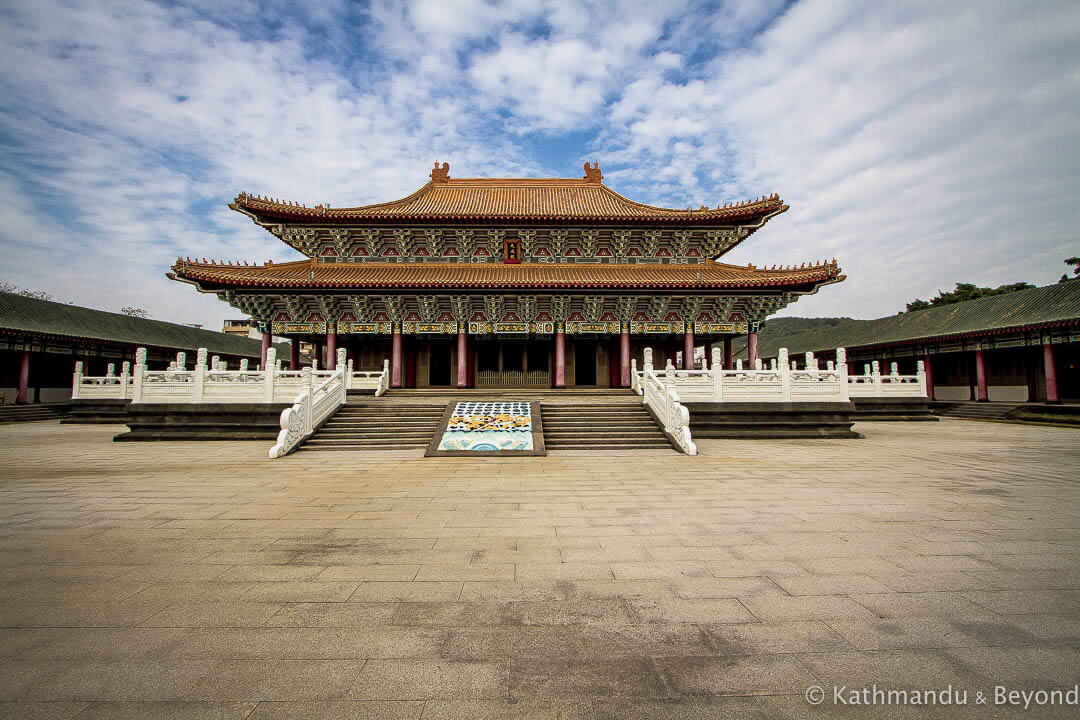 Ta Cheng Palace Confucius Temple in Kaohsiung
Ta Cheng Palace Confucius Temple in Kaohsiung
There is just one main letdown in our opinion and that’s the food. We know people who head to the island purely for its cuisine and it certainly has a good reputation among aficionados and cognoscenti but, it isn’t for us. I’m in no doubt our meagre budget meant we weren’t eating in the right places, but, language was also a problem for us when it came to ordering plus, we know we shouldn’t be put off by what something looks or smells like (stinky tofu for example), but we are and this reaction restricted what we ate.
The only other thing that is frustrating about Taiwan is the constant changes in the weather, which are particularly noticeable if you are travelling from one end of the country to the other in a relatively short space of time: one minute it is sunny and you’re reaching for the sunscreen lotion and the next it’s hacking it down with rain and/or cold and miserable.
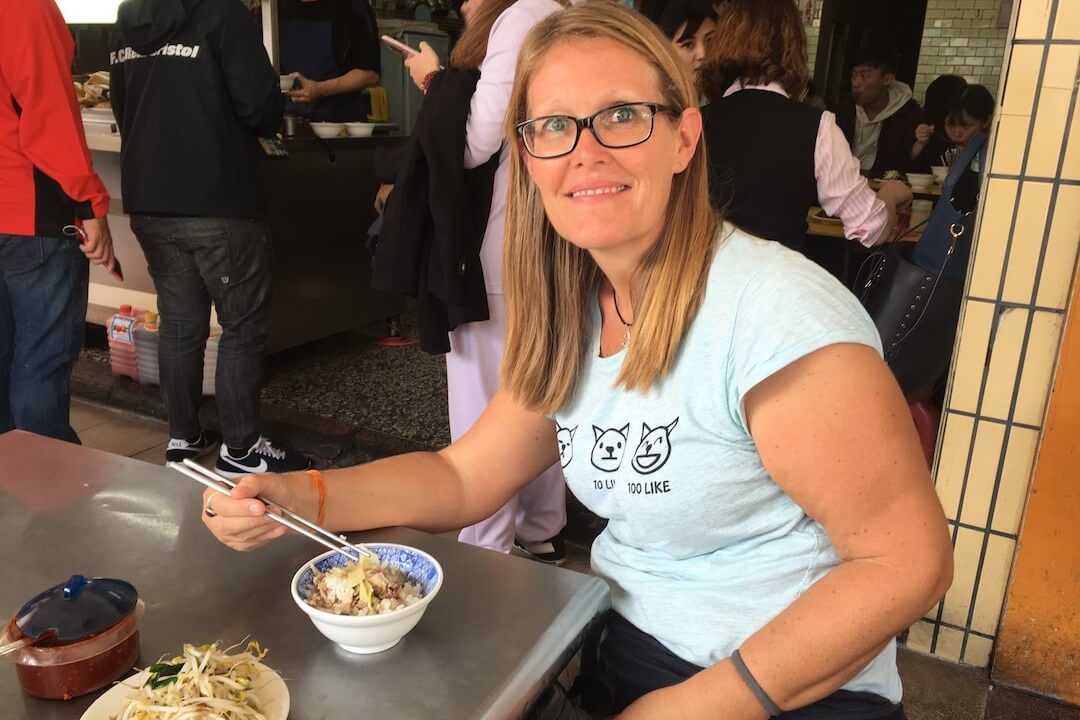
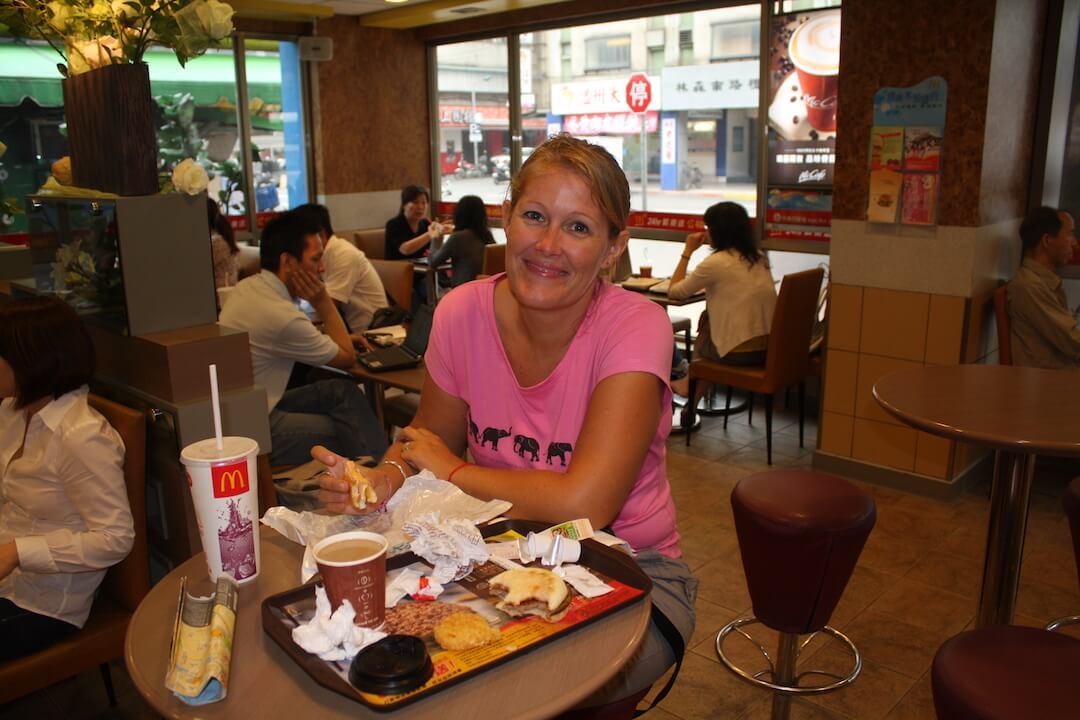
One of our more successful ordering moments (left) and one we’re not so proud of … (right)
This was our second visit to Taiwan and although it’s not the biggest culture shock we have had in Asia (that title goes to Japan), there are still plenty of (mostly good) things that we observed and/or learnt about the country and its people that make it stand out from other countries in the region. In no particular order, here are some of the things we picked up on during our three-week trip to the islands in January/February of 2018.
There are two main languages in Taiwan
Although practically all Taiwanese can speak Mandarin, a large amount, around 70%, also speak Hokkien, also known as Taiwanese language. The language originates from Fujian province in southern China, where many of the immigrants into Taiwan descended from in the first instance. The commonalities between the two languages are negligible and if you put a Hokkien and a Mandarin speaker in the same room and tell them to have a good old natter, they will likely find it hard to communicate with one another.
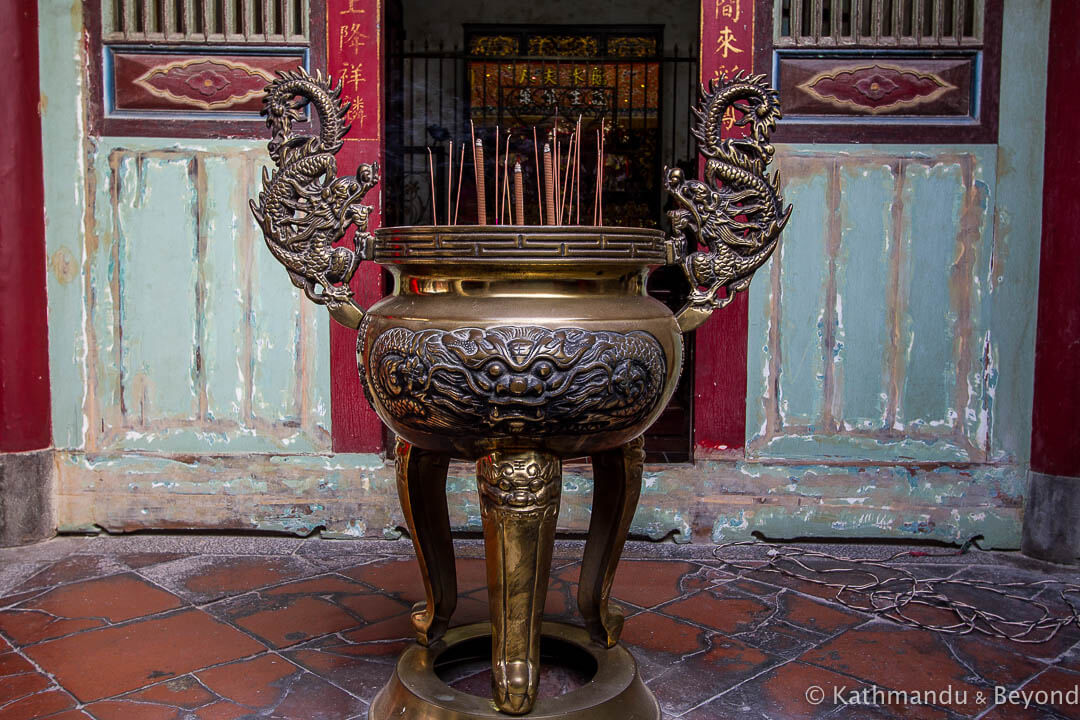 Grand Mazu Temple in Tainan
Grand Mazu Temple in Tainan
Toilets are everywhere in Taiwan and they are free
You will find public toilets all over Taiwan – parks, train and bus stations, convenience stores and even in the most random of places. They are always free and usually well maintained. This is in complete contrast to most countries in Asia, where public conveniences are as rare as rocking horse sh*t, often filthy, and normally incur a small charge in order to use them.
Taiwan embraces street art on a big scale
If you are into public art then Taiwan will be right up your street (ha, ha!). In major cities such as Taipei, Kaohsiung, Taichung and Tainan there is an abundance of urban artwork and most of it is pretty good. It is often in designated zones but you will also spot random pieces on the side of buildings, along walls and in other public areas.
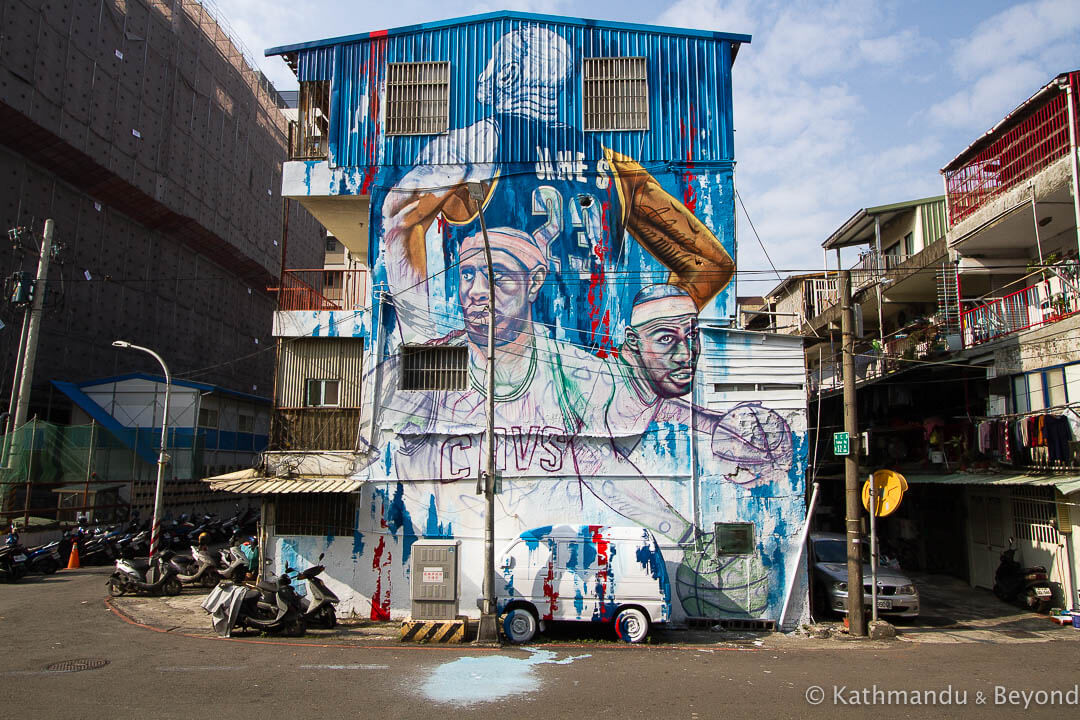 Street art in Kaohsiung
Street art in Kaohsiung
Taiwan is not China (the Taiwanese are not Chinese)
I’m not going to go into too much detail on this sensitive subject but, given the history and connection between the two countries, it’s hard not to draw comparisons between this small island nation and its mightier neighbour to the west but, you soon notice they are very different in many respects.
The national psyche of the Taiwanese is more akin to that of the Japanese rather than the People’s Republic of China. This isn’t surprising, however. Taiwan was annexed into the Japanese Empire from 1895 until 1945 and, as well as physical reminders from that period (architecture, infrastructure, cuisine etc.), the Taiwanese people still have many traits that are similar to those of the Japanese. For example, they are an orderly nation and (for the best part) they follow the rules. They are also polite and blissfully quiet and, again, for the best part, they don’t clear their throats and spit in a ridiculously loud manner or eat a meal as if they’ve only got 30 seconds to do so, which is often what happens in mainland China!
Within the country, transport systems are efficient, Wi-Fi works well, the streets are clean and, generally, Taiwan is a very safe place to be. All of these are also characteristics of Japan and, assuming you have visited the latter, the longer you spend in Taiwan, the more you will observe similarities between the two nations. You even begin to wonder whether the Chinese and Taiwanese are actually related at all!
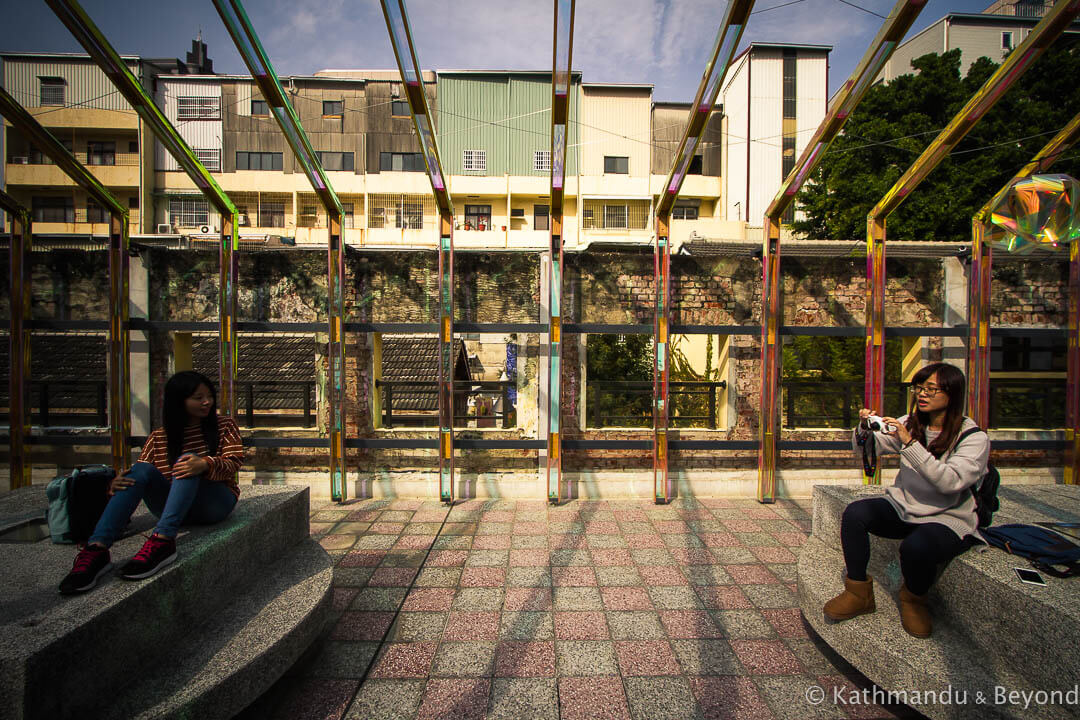 Tainan
Tainan
Taiwan is visa-free for quite a few nationalities
Unlike China, where the visa regulations are a pain in the butt, nationals from many European countries, including British and Irish, as well as Canadians and New Zealanders are visa-exempt when entering Taiwan and are permitted to stay for up to 90 days. Several other nationalities, including Americans and Australians, get 30 days visa-free upon arrival.
Tourist Information Centres are plentiful (and helpful) in Taiwan
You will find Tourist Information Centres in most destinations in Taiwan. They are normally conveniently located at railway stations and even smaller, less-visited, towns have one. At the very least, you will be able to pick up a city map that is in English but more often than not, the staff at these places are a font of knowledge about their city/town/region and will be able to assist with more complicated queries, such as locating an abandoned building or two, which is exactly what we asked on a couple of occasions!
Taiwan embraces quirky stuff nearly as much as Japan
This is a more recent association with Japanese culture and we saw numerous things that put a smile on our faces, or in some instances even made us laugh outright: water dispensers with smiley faces that look like petrol pumps, for example, heated toilet seats, freaky-looking statues, strange advertisements and totally weird mascots outside places like post offices, restaurants and convenience stores. Every time we saw a new one, we would stop and take a photo of it. We couldn’t help ourselves and probably have enough for a ‘Quirky Taiwan’ photo-essay that I’m sure one of us will put together one of these days, if only for our own amusement!
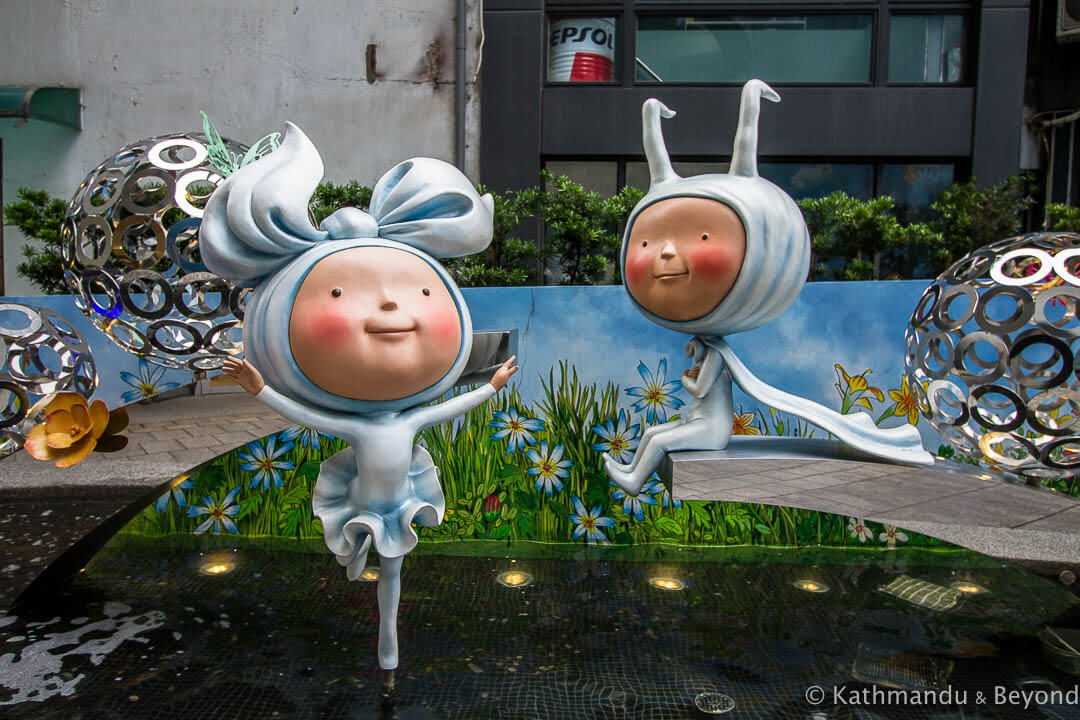 Hsinchu
Hsinchu
The Taiwanese are big into cycling
Although you can’t fail to notice a sea of scooters in practically every Taiwanese city and town, cycling as a means of getting around and as a recreational sport (road and mountain biking) is still very popular on the island. There are cycling lanes everywhere, even on rural roads and the amount of people that use public bike-sharing schemes such as YouBike in Taipei runs into the millions. Indeed, the world’s largest bicycle manufacturer, Giant, is a Taiwan-based company and prices for good quality bikes are very reasonable.
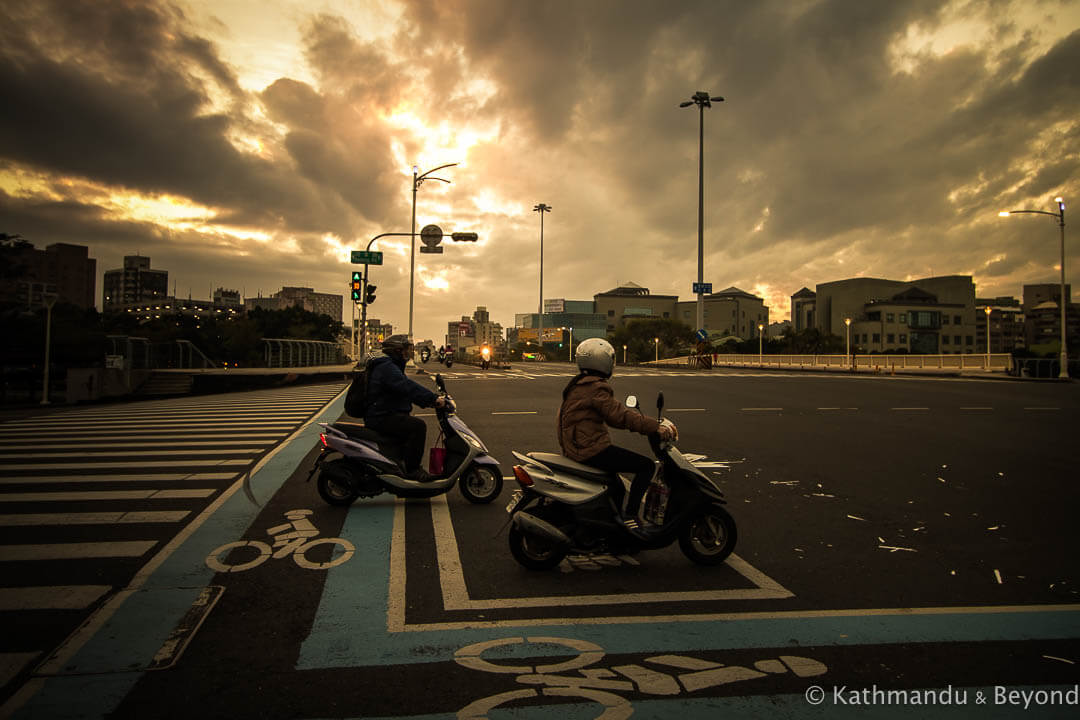 Kaohsiung
Kaohsiung
There are lots of abandoned locations in Taiwan and they are easily accessible
If you are into exploring abandoned buildings, you will have great fun in Taiwan. Like many Asian people, the Taiwanese are very superstitious and there are ghost stories attached to many of the country’s dilapidated locations. During our second time in the country, we visited several places that were abandoned and given over to the elements and didn’t have any hassle getting into any of them.
If you are interested in reading more, so far we’ve written about a haunted mansion in the southwest of the country, a foreboding residential/commercial complex in the heart of Taichung, a ramshackle UFO-style pod holiday village north of Taipei, an abandoned amusement park on the outskirts of Taichung, a disused hospital in Yuanlin and a former Japanese naval communication centre in Kaohsiung.
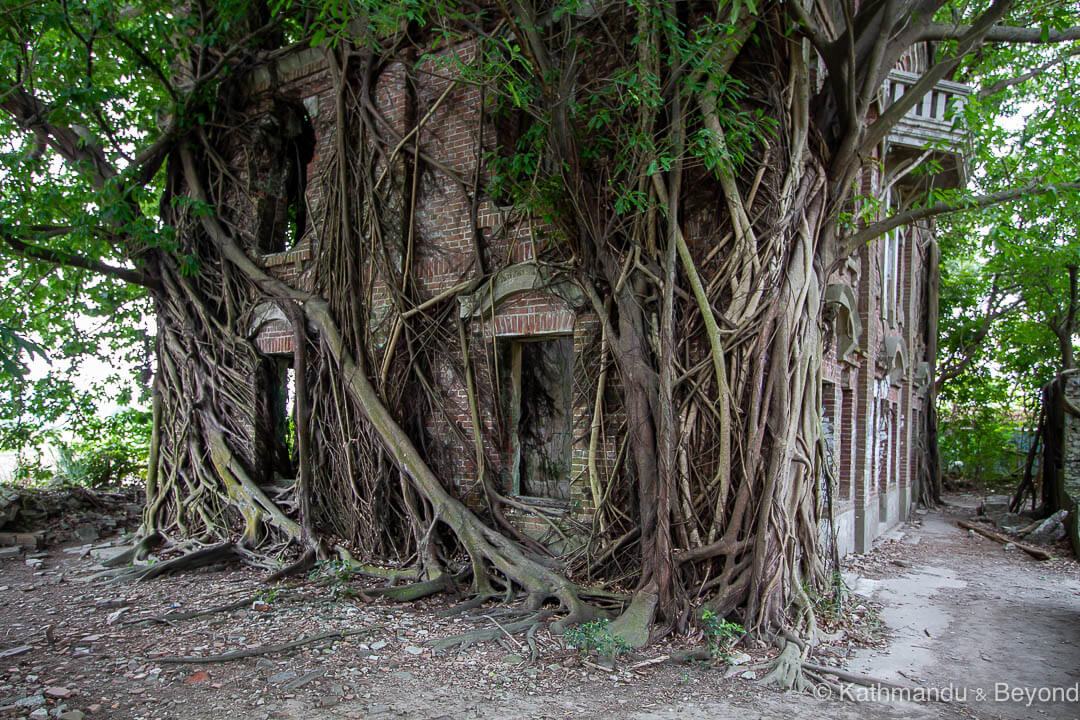 Old Liu Family Mansion near Chiayi
Old Liu Family Mansion near Chiayi
Taiwan has more than its fair share of earthquakes
If you type ‘why does Taiwan’ into Google and let it finish the sentence for you, ‘have earthquakes’ is pretty high on the list of words that come up. I’m no expert but according to Taiwan’s Central Weather Bureau “Earthquakes in Taiwan are caused mainly due to collisions between the Philippine Sea Plate and Eurasian Plate. The impact of these collisions has also caused the emergence of the island of Taiwan and her magnificent geological scenery, and a high frequency of earthquakes as well. As a result of this persistent seismic activity, Taiwan will continue to experience earthquakes with magnitude ranging from small to large.”
We experienced several tremors/aftershocks as a result of the latest earthquake to hit the country when we were there in early February 2018. A 6.4-magnitude quake struck the east coast city of Hualien killing several people and injuring hundreds more. We were in Taipei, 160km north of the epicentre, and in bed in our hotel room and, each time a tremor occurred, we felt an aftershock. In total, we experienced five tremors over two consecutive days and each one was a horrible sensation (there were another 18 minor tremors during that period that we didn’t feel!). It was like being inside concrete jelly, and you feel completely helpless. On the first occasion, we got out of bed and went down several flights of stairs to the hotel lobby. The girl on the desk told us there was nothing to worry about and that we should go back to our room. Along with two other tourists, who had also made their way to the reception, I think we were the only people in the hotel to show any concern about what had just happened, which gives an indication of how often Taiwan is rocked by earth tremors.
We were led to believe, admittedly not by anyone of authority on the subject (I think it was the hotel receptionist!) that, like California, which also experiences a lot of earthquakes, Taiwan is well prepared for such situations. Apparently, new buildings are designed so they collapse in a way that causes minimum impact plus, public service announcements on what to do in the event of a serious tremor are frequent. But, a quick search of ’Is Taiwan prepared for earthquakes’ on the Internet would suggest otherwise. I scanned the headlines but I’m one of those people who doesn’t see the point in reading up about something that may or may not happen. You’d never leave the house if you did, is what I think, but certainly, the advice that you should remain in bed and cover your head with a pillow doesn’t exactly fill me with confidence, even if it is the right thing to do, which apparently it is!
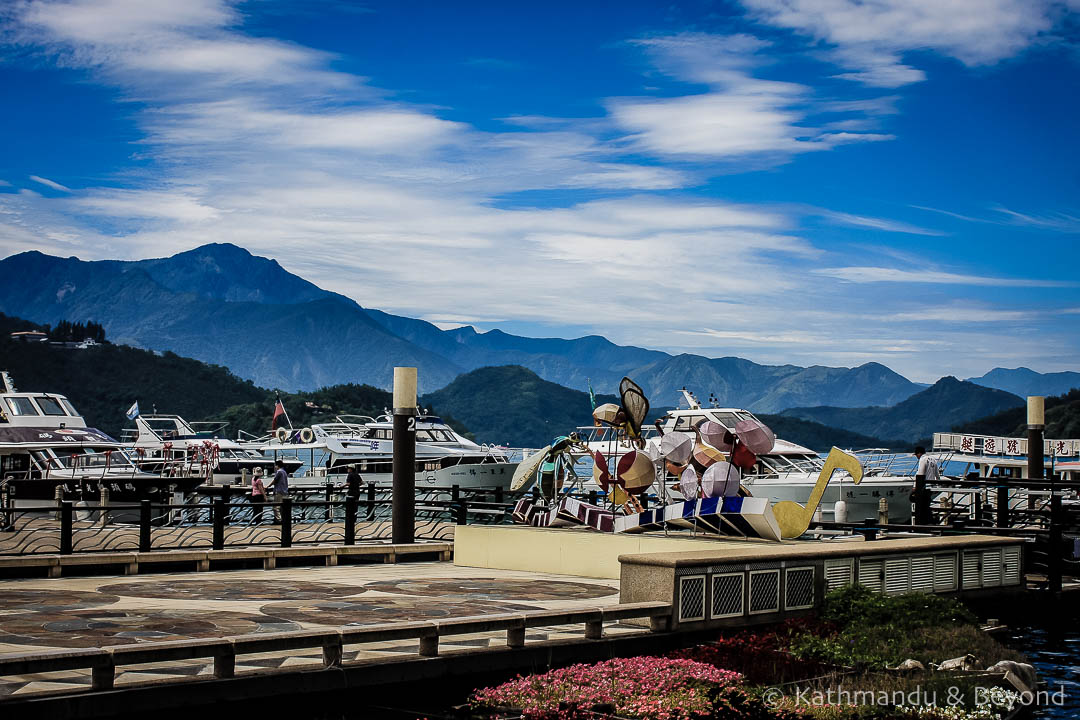 Sun Moon Lake (we haven’t got any earthquake-related photos!)
Sun Moon Lake (we haven’t got any earthquake-related photos!)
Taiwan has a public insult law that is implemented on a regular basis
Flipping the bird (giving someone the middle finger) or telling someone to f-off is a criminal office in Taiwan and it’s quite common to be taken to court if you are the culprit. It’s rare you would end up in jail if found guilty of the offence but fines are commonplace and you may be asked to make a public apology.
Kirsty had to remind me a couple of times about this law. Generally, the Taiwanese obey rules but they are terrible for jumping lights/pedestrian crossings. When drivers did this to us my natural instinct was to send them on their merry way with some kind of gesture. Luckily, I tend to favour the British hand signal that begins with a W rather than the more popular American-style middle finger and I don’t think the Taiwanese knew what it meant so I didn’t get into any trouble. And besides, those jumping the light would have been in the wrong anyway and that would have been my line of defence!
Public transport is excellent in Taiwan
I am assuming Taiwan’s superb public transport system is based on the Japanese model because it is easy to use, frequent and runs very smoothly indeed. In fact, I think it is better than the one in Japan because it is considerably cheaper. With the railway, this is especially the case if you avoid the super-fast trains and high-speed rail links. Taiwan Railways has an excellent website that lists prices as well as schedules and, by taking a slighter slower train, you can save a reasonable amount of money.
The buses are also efficient and reliable, as are the metro systems in both Taipei and Kaohsiung. Getting an EasyCard makes life simpler if you are planning to travel around a lot but you can also buy tickets for all modes of transport as and when you require them.
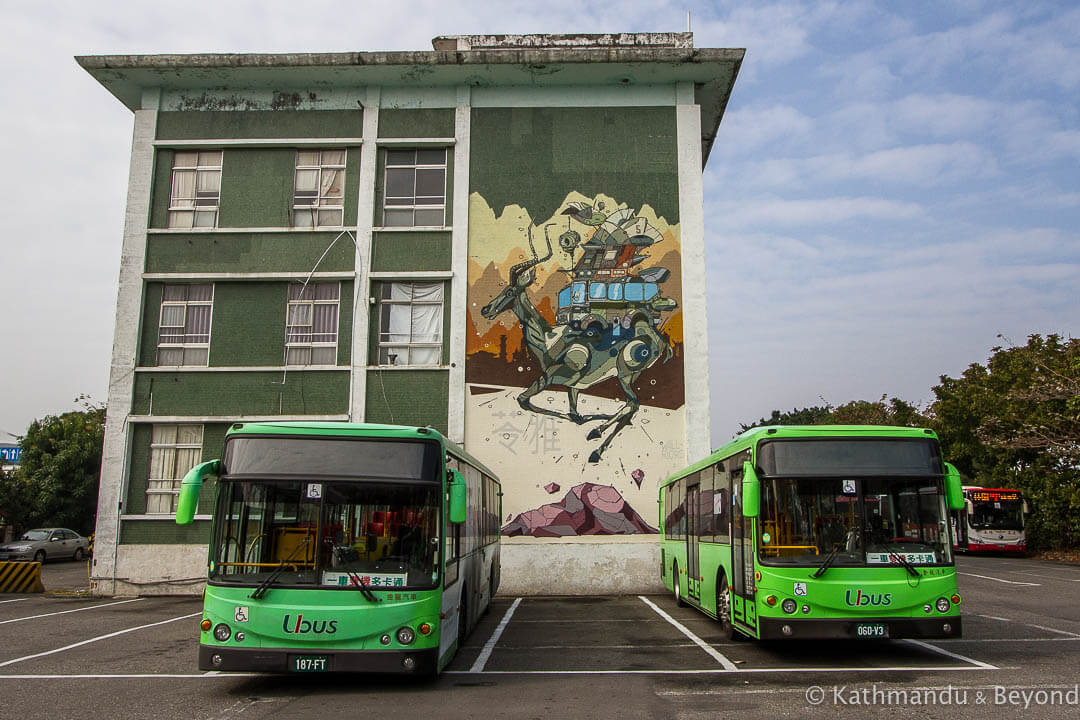 Kaohsiung
Kaohsiung
The cheapest place to have a sit-down beer in Taiwan is at 7-Eleven or FamilyMart
I know this sounds rather sad but it’s true. Alcohol in pubs and bars is expensive in Taiwan and convenience stores are actually an alright place to sit and have a drink. Again, the same as in Japan, you can linger in 7-Eleven and FamilyMart in Taiwan if you so wish. Most of them have a seating area, free Wi-Fi and a toilet. In fact, they can get quite busy at certain times of the day and there were a couple of occasions when we went in one and couldn’t get a seat! As well as those who are in the know about where to get the cheapest beer, teenagers and school kids also use them as a meeting place and the staff don’t seem to mind the homeless coming in for a respite from the outdoors either. They are certainly not the most atmospheric places to hang out but keep them in mind if you are on a budget and fancy a beer or two …
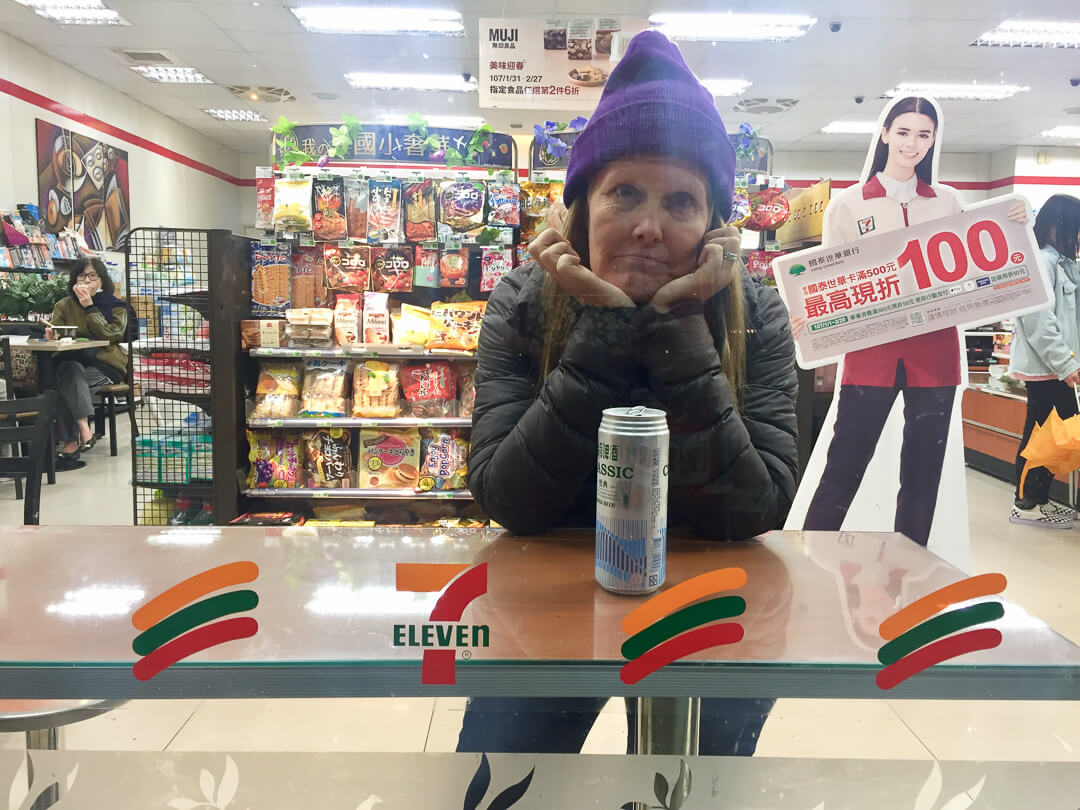 Not the swankiest joint in town but the beer is cheap!
Not the swankiest joint in town but the beer is cheap!
There is no need to buy bottled drinking water in Taiwan
We didn’t have to buy any bottled water during our time in Taiwan. There are dual hot and cold water dispensers in numerous public places plus, even the smallest hotel/guesthouse will have a facility from which you can fill up your bottle or flask with filtered water. I don’t know if you can drink the water from the tap in Taiwan. There was never any need to ask the question.
It’s not uncommon for hotels in Taiwan to have a laundry room
This was very handy for us and saved our bacon on more than one occasion. We didn’t think we would be going anywhere remotely chilly during our six-month stint in Asia (Taiwan was a last-minute decision) and so only packed one pair of jeans each. Apart from Kaohsiung in the south, it was cold for the majority of our time in Taiwan and although we wore our jeans for as long as was socially acceptable, they needed to be washed every now and then. We would check-in to our hotel, slip into shorts (in the room, not at the reception!) and head to the hotel laundry room where we would wash (one hour) and tumble-dry (another hour) our jeans before putting them straight back on again! We had to pay to use the machines but it wasn’t very much and interestingly, given we were in Asia, we never saw any laundromats or anywhere offering a laundry service all the time we were in the country so we were pretty grateful for the facility.
Many of Taiwan’s museums and other attractions are free of charge
This made a pleasant change on a continent where most countries, with Thailand, Cambodia and India being among the worst culprits, not only charge an entrance fee for their attractions but also has a dual pricing system whereby foreigners pay way more than the locals. In Taiwan, not only does everyone pay the same regardless of nationality, it wasn’t actually that often that we had to put our hands in our pockets and pay at all.
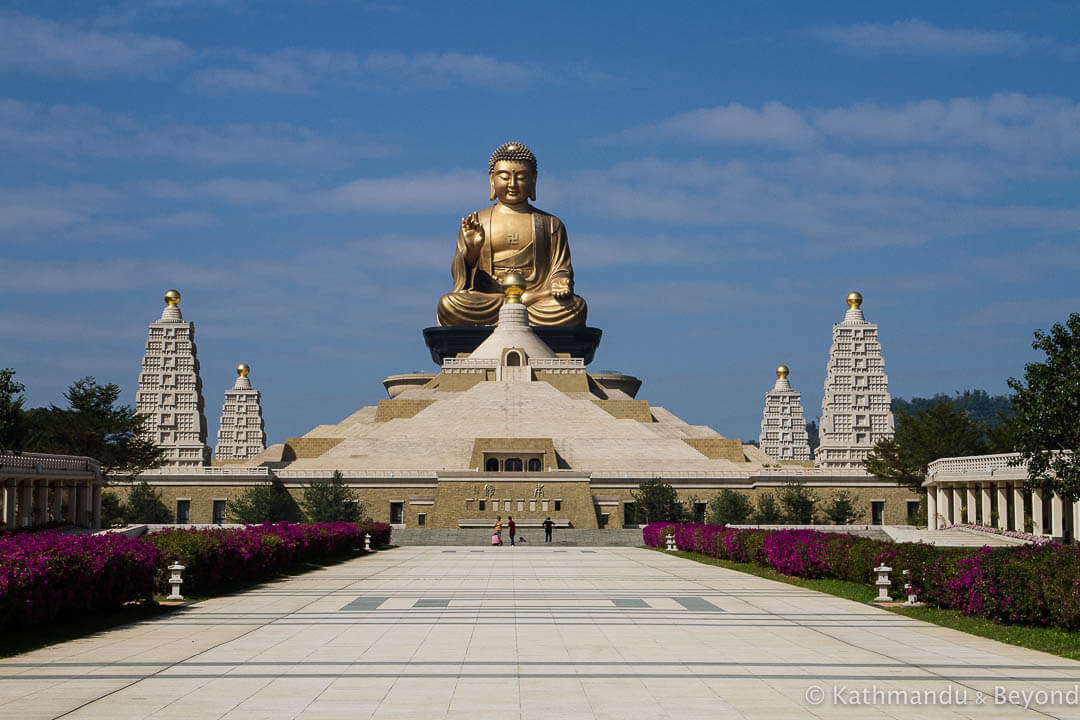 Fo Guang Shan Buddha Museum near Kaohsiung
Fo Guang Shan Buddha Museum near Kaohsiung
English isn’t widely spoken among the Taiwanese but that doesn’t stop them from trying to help you
I’ve said it before, the Taiwanese are among the nicest and most helpful people we have met on our travels. Unlike in China, where barriers will go up if a person doesn’t comprehend what you are saying and isn’t able to help you, most Taiwanese, regardless of age (which I found interesting) will try and figure out what you want. If the person you approached in the first instance can’t assist, they will find someone who can and before you know it, you’re surrounded by five or six people all looking at your map (or smartphone), for example, trying to figure out where you are trying to get to. It can end up being great fun, with lots of laughter and invariably one member of the group will escort you to your exact location even if it means going out of his or her way to do so.
HAVE WE INSPIRED YOU TO TRAVEL TO TAIWAN? CHECK OUT OUR TAIWAN PHOTO GALLERY AND PIN THIS TO YOUR TRAVEL BOARDS…
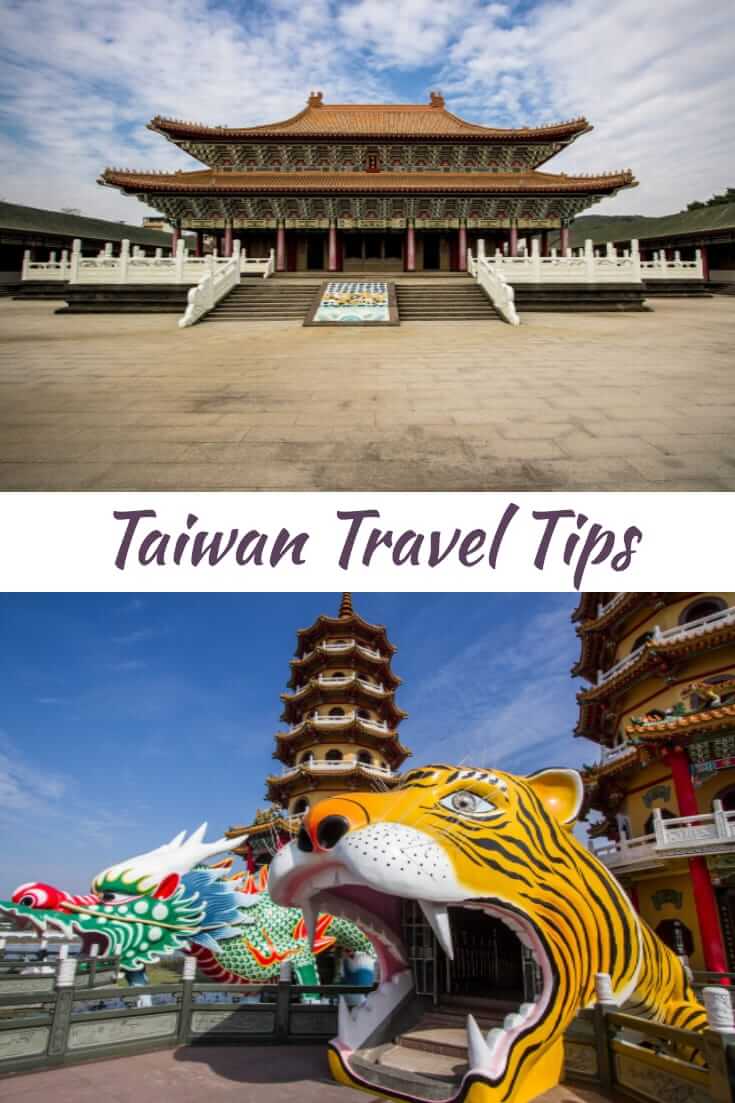
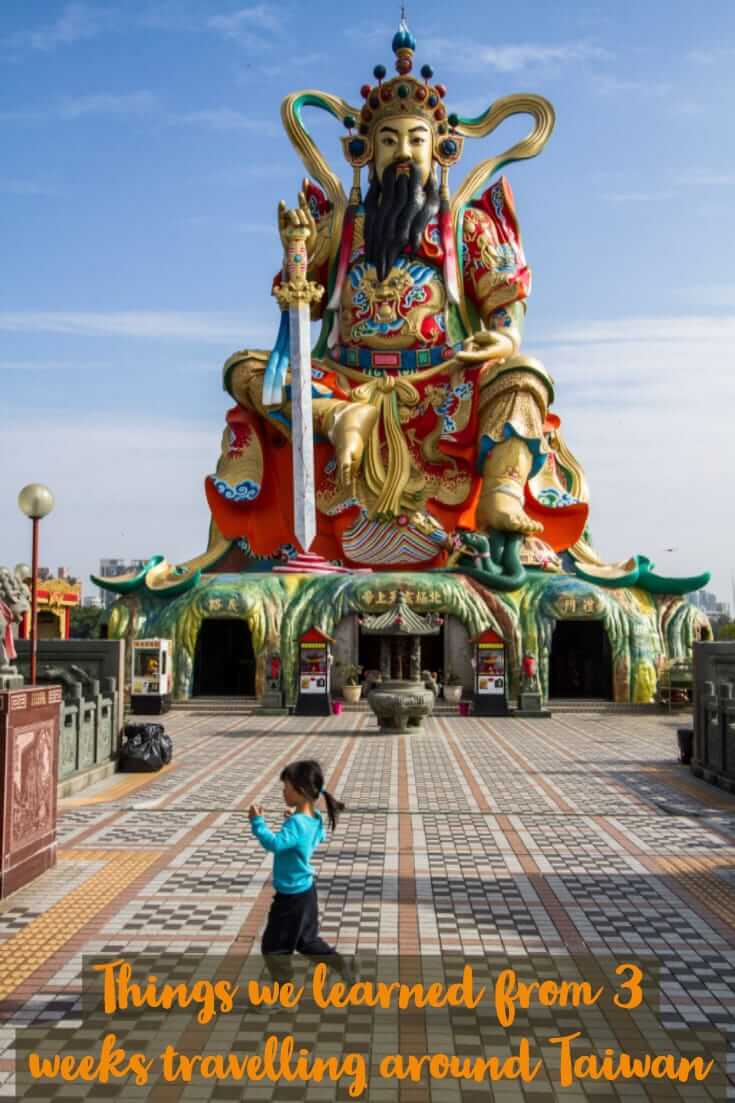
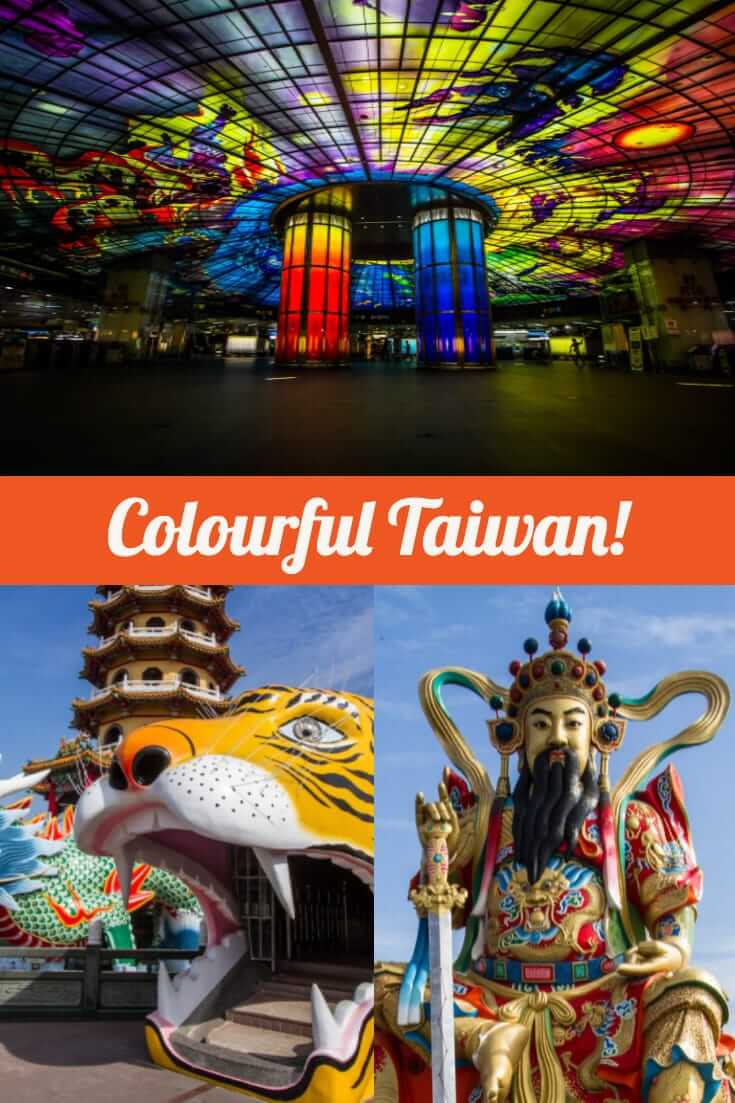

I was reading this quite enjoying the post until I got to the photo of the girl taking the photo of the other girl.
After 3 months in Asia I am f_ing sick and tired of the f_ing posing for photos by Asian tourists. It’s never ending and they can stand in the same spot doing the same pose for 10 minutes. They don’t care about the monument behind them, all they care about is taking that selfie. And it’s not like they’re supermodels or something.
It is so boring and predictable. We’re on a hop on/hop off bus in Singapore and the girl in front of me is posing and taking selfies of herself on the bus. She’s not even looking at anything!
Gee, we enjoy Asia and the people are nice – but this photo taking obsession drives me crazy.
That’s my rant.
Nice photos! 🙂
I completely understand where you are coming from! Just the other day I posted a rant on my personal Facebook page (Kirsty won’t let me put rants on our page!) about Instagramers and how they just pose and promote products in front of incredible sites and don’t give a hoot about the place they are visiting. I’m afraid you and I are fighting a loosing battle though – it’s not just Asia anymore (where I think it all began), it’s all over the place and the only way to get away from it is to avoid the said attraction in the first place. I’m also with you in that most of them aren’t much to look at in the first place but that’s our culture now!
My suggestion … take up urbexing and/or hunting for Soviet architecture – to date we haven’t bumped into any posers around these places :-).
Timely post for me as I hope to be heading to Taiwan this autumn or next spring. Thanks.
Very good but I suspect you won’t be lowering yourself to hanging out in 7-Eleven and FamilyMart in order to get a cheap can of beer!!
Probably not for beer, but in Japan I purchased many a meal in 7-Elevens and Family Marts, plus Lawsons, and even ate a few in those establishments, though unaccompanied by beer.
Same with us – they were edible and, more to the point, cheap!
Good summary of traveling in Taiwan. I live in Taiwan but I think you have a good understanding of the Chinese-Taiwanese distinction. I’m glad you reached beyond surface similarities like ethnicity and use of Mandarin and was able to pick up the differences in behavior and attitudes. Your other points were valid too. Don’t worry about whether your not being too impressed by the food was because of not spending too much. Taiwanese food is not high-end so spending more would not have mattered.
Thank you Hilton, I appreciate your comments. Visiting a country more than once (it was our second time in Taiwan) also helps you understand it more. I’m hoping it won’t be our last time either – we haven’t seen much of the east coast and so want to come back to explore that area. I’m pleased to read your remarks about the food – I guess you either like it or you don’t. I could eat Indian food three times a day but I know many people who can’t abide it and I think both Kirsty and I are bit like that with Taiwanese cuisine. It won’t put us off returning, however!
I’m glad that you enjoy visiting Taiwan and plan to return again for a third time. I think you will enjoy the east coast’s great scenery. A lot of Taiwanese food has a moderate taste that omits strong flavors, so it can be kind of bland. Coincidentally I like Indian food myself.
Great to hear – we are sold on a third visit – the east coast plus a few of the islands!
Oh man, you missed out on the night markets of Taiwan! Those are the highlights of Taiwanese food and all – no wonder you didn’t have a good experience.
We ate quite a bit on the night markets because they were the best places to eat on a budget – we simply didn’t get on with the food! Each to their own!
After six weeks in Taiwan (December 2018-January 2019), I agree with everything you have written, though I did have better weather and a bit more appreciation for the food. I agree it’s not as good as some other Chinese food, but I liked what was on offer at the street markets and the little restaurants where you could get a wooden skewer with meat and vegetables for about a dollar. Even liked the stinky tofu, despite the foul smell. Didn’t particularly like the gelatinous dumplings, but the Taiwanese sure do.
I also very much enjoyed the very colorful temples and temple ceremonies. I could, and did, spend hours watching the goings on. Never saw that sort of stuff in China itself, so it that respect Taiwan seems more Chinese, traditional Chinese, that is, than China. But then again, some people like colorful temples while others like horridly ugly concrete buildings.
The best part is the people. Very possibly the friendliest and most helpful people I’ve ever come across. Very unChinese. I used to think West Africans and Burmese were the nicest people I’d come across traveling (though the Rohingya can justifiably take issue with that judgment), but now I’d have to say the Taiwanese, who, as they themselves will tell you, are not Chinese.
Any thoughts on the LP guidebook, assuming you used it? I thought it may be the worst LP guide I’ve used, and I’ve used dozens over the last 40 years. I wish I had brought the Rough Guide.
You were brave trying stinky tofu – I know it’s wrong but if something smells horrible I won’t go near it. Don’t tell me you are also partial to a bit of durian!!
I agree with you about the temples – we also saw quite a bit of action going on inside them as well as in the courtyards, especially in Tianan and also in Lukang, where the main Chenghuang temple was rammed both in and out. And you know the Taiwanese get my vote as the possibly the nicest people on the planet, along with Bangladeshis, which I suspect you will also concur with??
It’s interesting what you say about the LP guide – we mentioned the same thing. Whoever wrote it has lived there for too long in my opinion and the guide doesn’t really focus on what the traveller wants but more about the needs of expats. it was a good job you had our excellent blog posts for guidance!!
I do like durian. As with stinky tofu, you have to get over the horrid smell. But wait a second! You like marmite. Both smells and tastes wretched.
I think you’re right about the LP Taiwan, but it also was badly organized, I thought. I was also disappointed by the LP guides for Japan and Korea, quite a cut below the ones for India, Sri Lanka and Burma, which I have used recently. Maybe Bangladesh, too, though I can’t remember. And yes, very friendly people in Bangladesh.
Marmite is made in heaven – pure and simple!! India has always been one of the best LP guidebooks. We often compare others to this one!